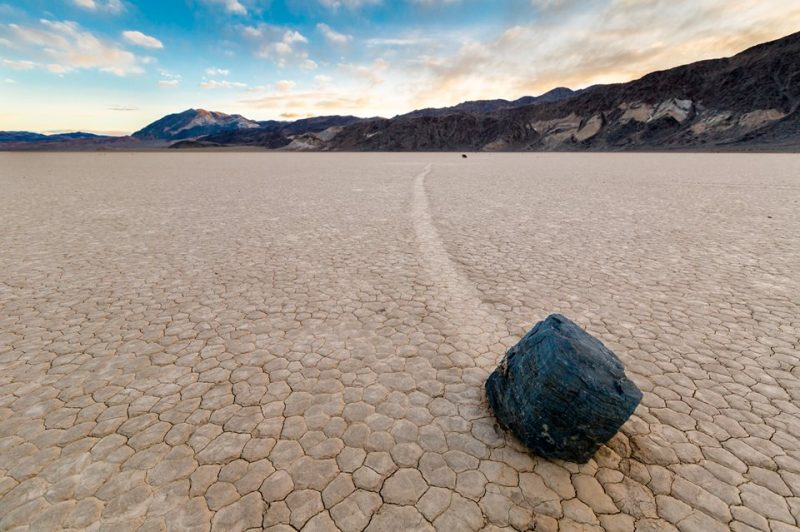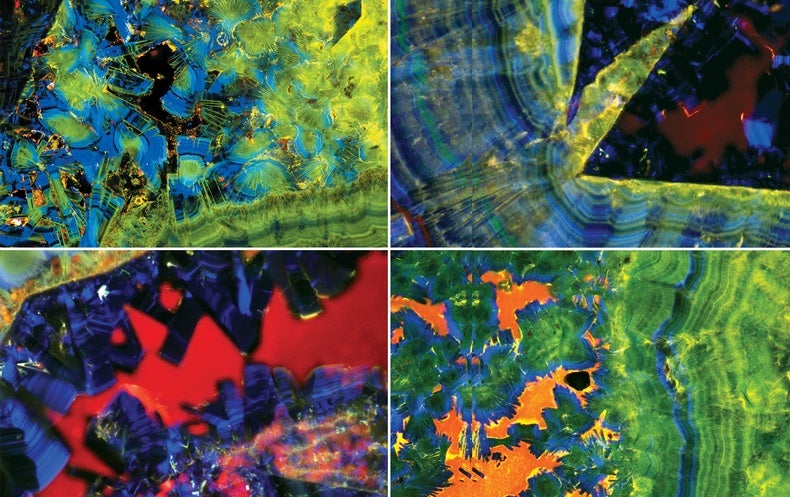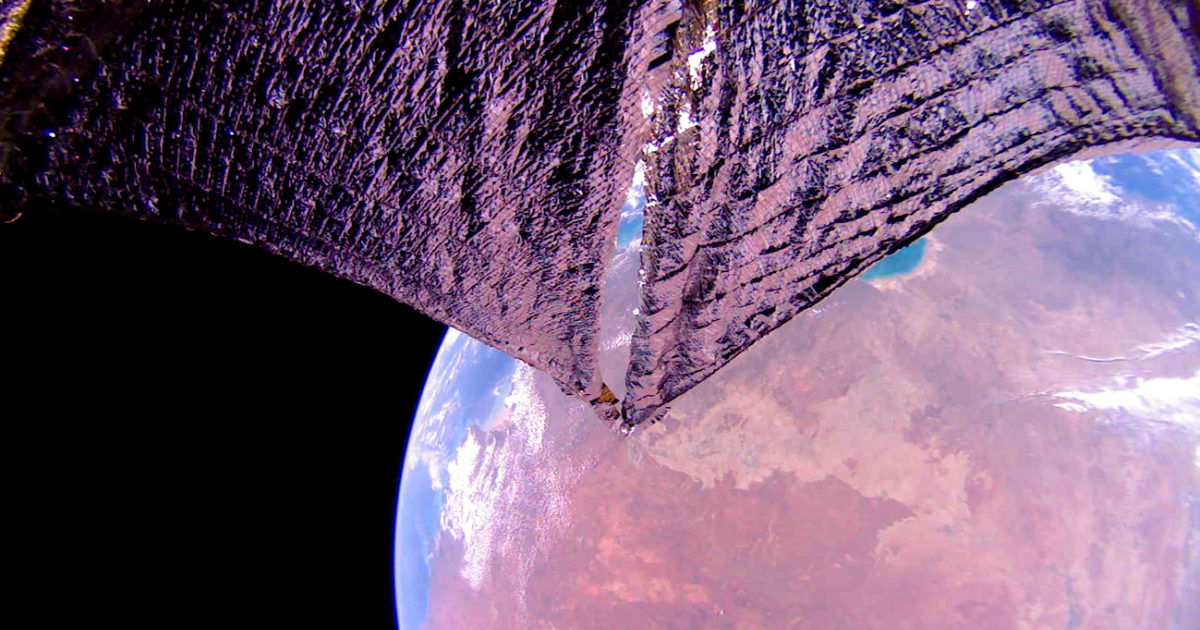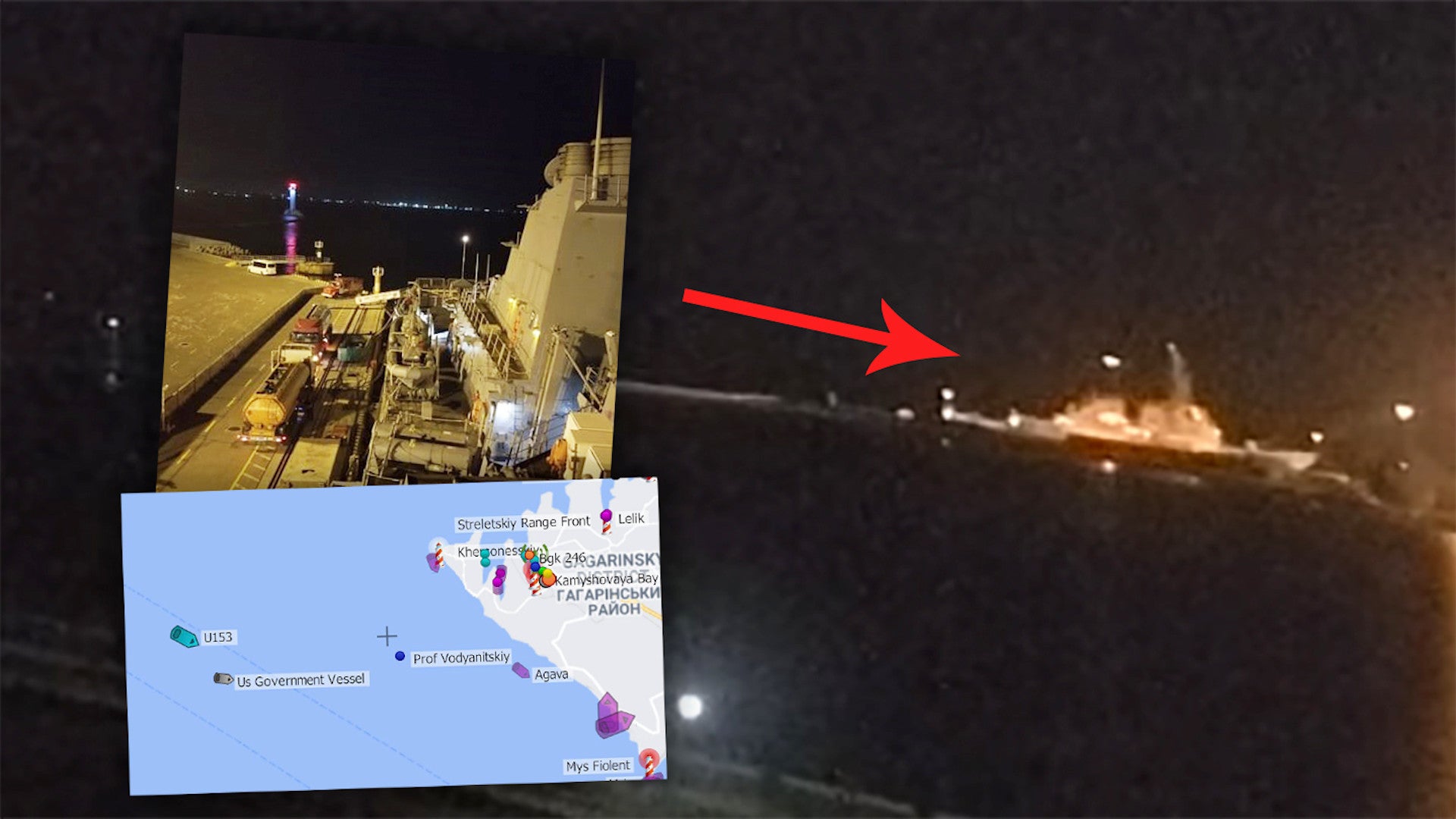
What moves the sailing stones of Death Valley?
How could rocks – driven by some unseen force – slide across the ground, leaving behind a trail? At Racetrack Playa, a dry lake bed at Death Valley National Park in California, it was a long-standing mystery that was finally cracked in 2014 by two cousins. They discovered that the rocks were nudged into motion by melting panels of thin floating ice, driven by light winds, in winter.
The sailing stones, or sliding stones, of Racetrack Playa have been observed and studied since the early 1900s. It was long thought that strong winds pushed the stones. More fanciful theories involved magnetic fields. And as is the case in any good mystery, space aliens were implicated.
In August 2014, a group of (very patient) researchers aided by the Scripps Institution of Oceanography, NASA and others announced they had solved the mystery. In a statement, Richard D. Norris and his cousin James M. Norris said that the rock movements occurred during a rare combination of conditions in winter. There had to be a shallow layer of water in the dry lake bed and nighttime temperatures cold enough for the formation of a thin layer of ice. On sunny days, melting caused the ice to break into large floating panels that, driven by light winds, pushed against the rocks to move them, leaving tracks on the desert floor. The editor- and peer-reviewed journal PLOS ONE published their study.
The video above – from the Slithering Stones Research Initiative – shows a sailing or sliding or slithering stone of Death Valley’s Racetrack Playa in motion. See it? It’s the big rock in the foreground.




















